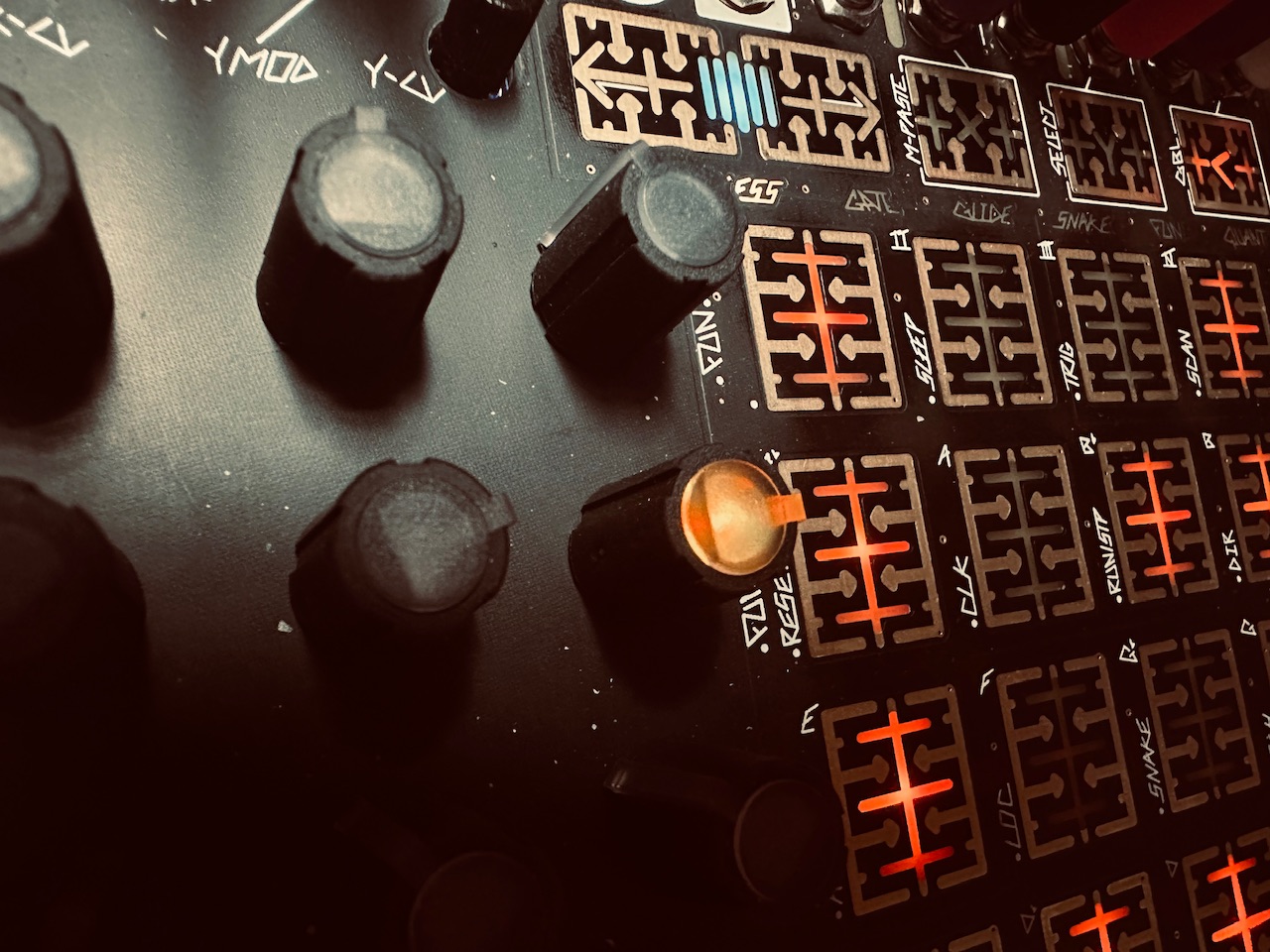I worked today, but got off earlier than normal. Even still I was short for time, but I decided pretty early in the day that I was going to put together one of my favorite patches in my little Make Noise ecosystem. This patch was inspired by a patch by Walker Farrell at Make Noise. The idea is to lean into vactrol bleed as an asset, rather than trying to defeat it somehow. I’ve done a patch like this before, but it was just okay. I wanted another at-bat, so-to-speak, and today was the day.
This patch is comprised of three separate voices. The first voice is a sine wave from STO, being sequenced by René’s Cartesian Channel, only striking the vactrol in QMMG infrequently. At no time were more than three gates active, and most of the time it was only two gates. And because both the X and Y channel were being clocked at two different speeds, as were both channels’ Stop/Run parameter via the X and Y Mod inputs, the sequence started and stopped in interesting ways. But because vactrols bleed, that is they take a second for the vactrol to completely close, any pitch changes that occur as part of the sequence will still be audible, though not gated at full volume. Not notes, per se, but also existing as pseudo-notes.
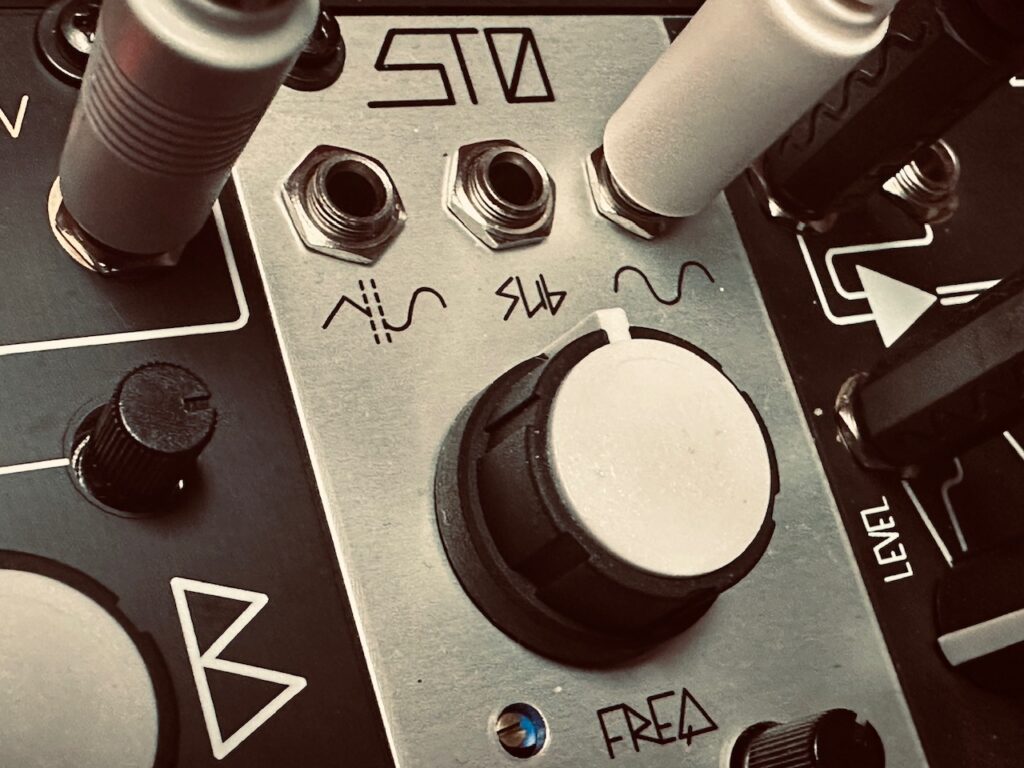
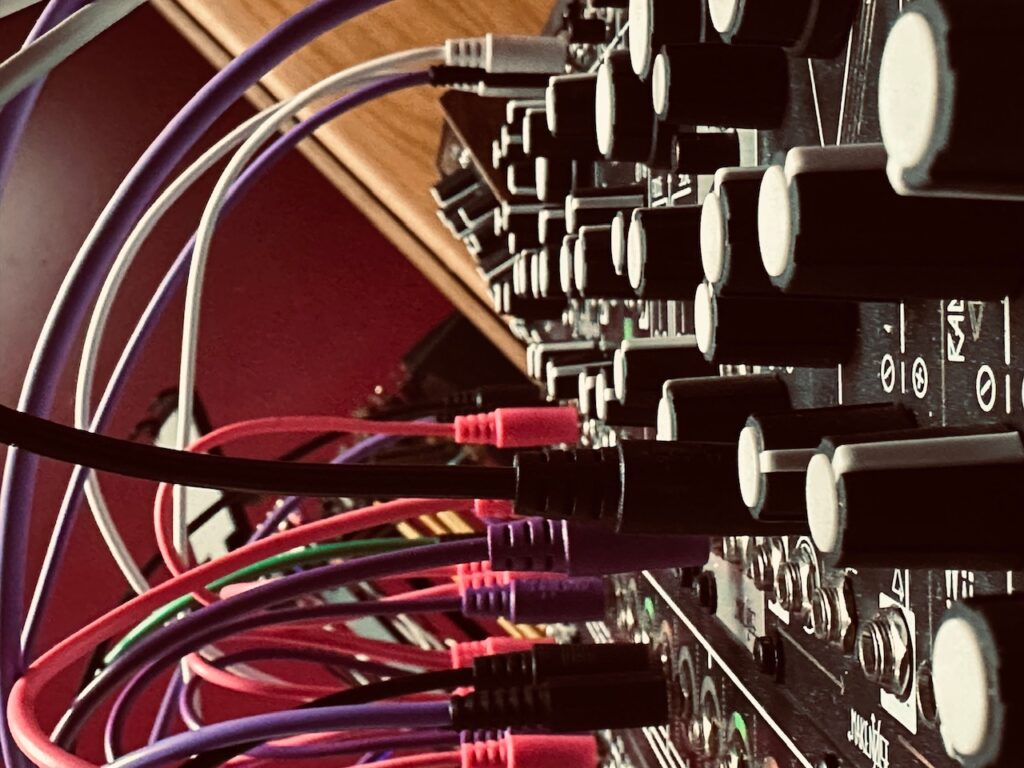
The second voice was made of two sine waves from Spectraphon being ring modulated in ModDemix, and enveloped by Function, before being panned in the stereo field by a slowly cycling envelope from Maths in X-Pan. Spectraphon’s oscillator A was tuned to the same pitch as STO, with the B side tuned an octave above for a pretty standard 1:2 ratio. Both oscillators received the same pitch information from René’s Y Channel.
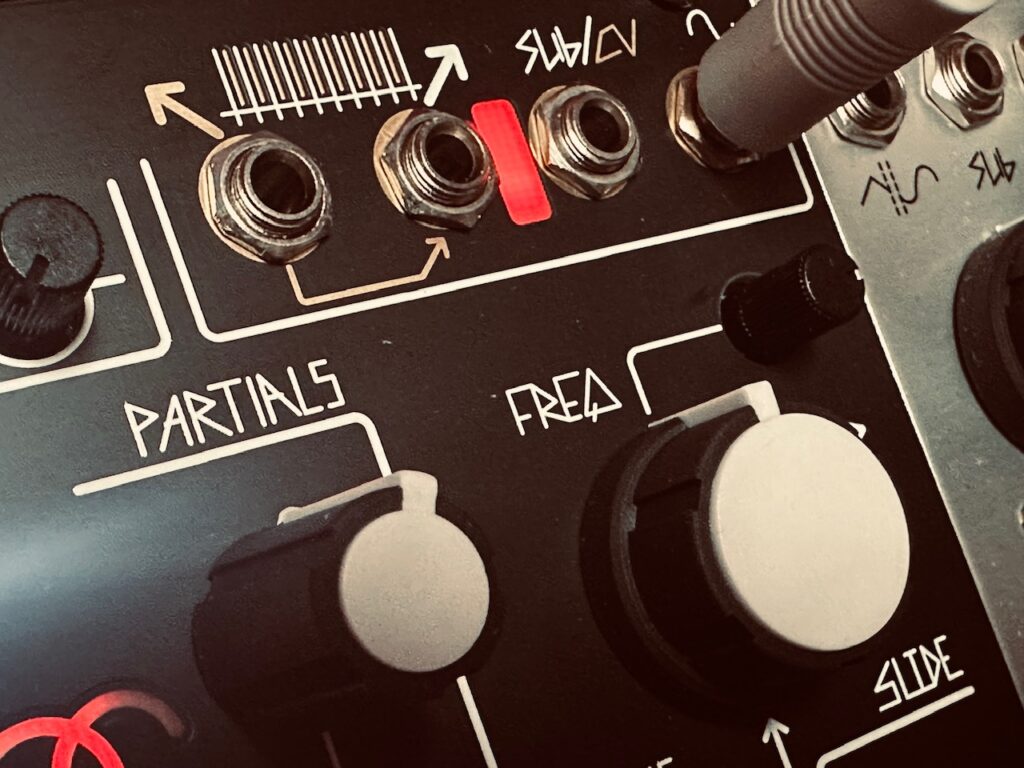

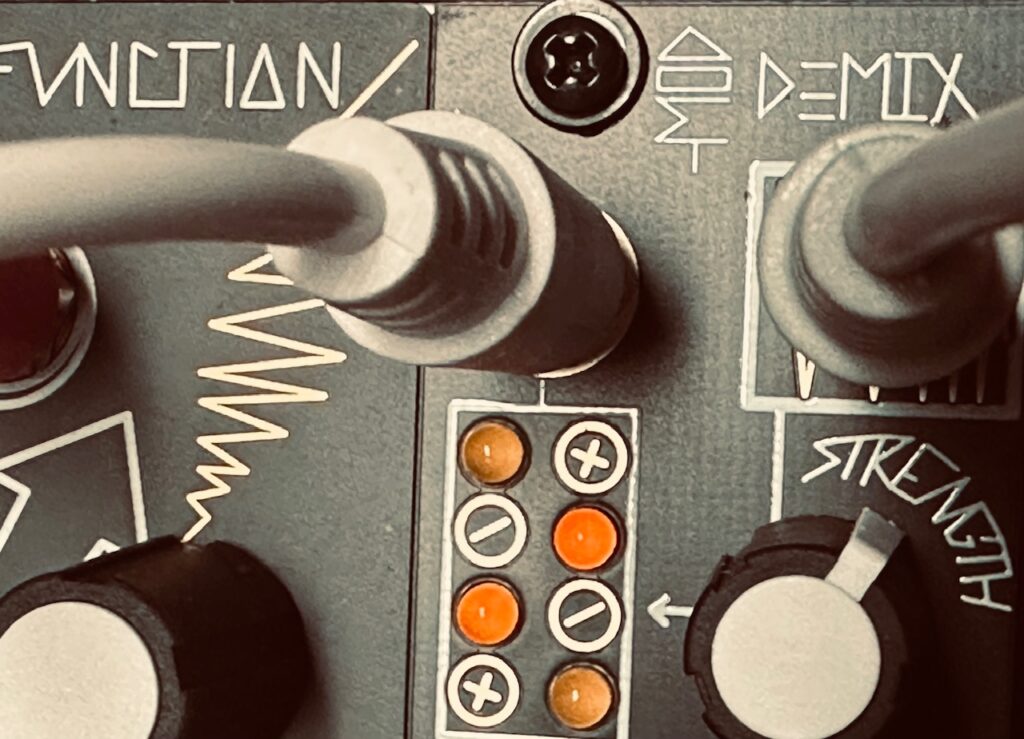
For both of these voices I was regularly changing the sequence. Which steps were gated and which weren’t, which steps were active and which weren’t, and occasionally adjusted pitches on some of the steps. This created a stream of change that isn’t always noticeable, but keeps the performance moving.
The third voice was QPAS, pinging away. It had a steady gate hitting the input, but it was being level controlled by a slow envelope from Maths that was being triggered infrequently by René’s X Channel. When the trigger would hit Maths, it would send a slow envelope to QPAS’s VCA input which would control when and how long QPAS would be heard. I arranged the Resonate knobs to get a nice marimba sound, and added some self-modulation from the HP output back to the Frequency input.
Everything is mixed together in X-Pan and goes through Mimeophon before going to the output.

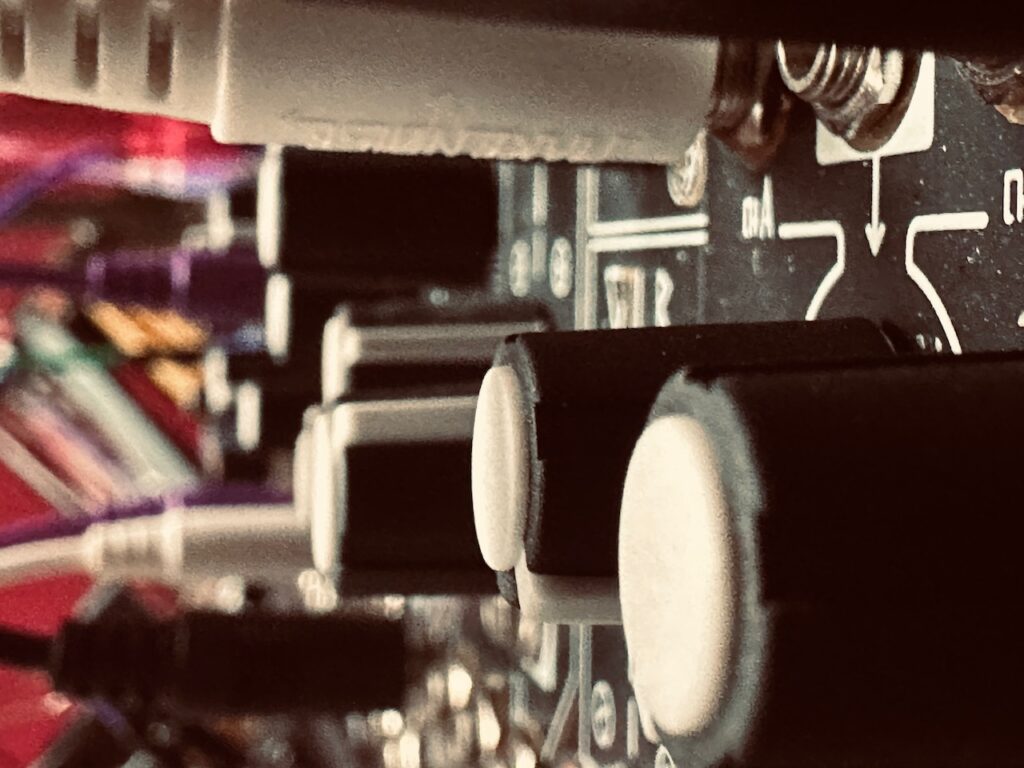
I’ve always loved the concept of this patch, but it wasn’t until today that I felt like I’ve done it some justice. I’ve butchered it a couple of times before, but not this day. And what’s more interesting (to me at least) was that patching was easy today. Ideas flowed freely, and patch cables followed. It’s a testament to the fluidity of a full Make Noise system. It’s a complete instrument unto itself.

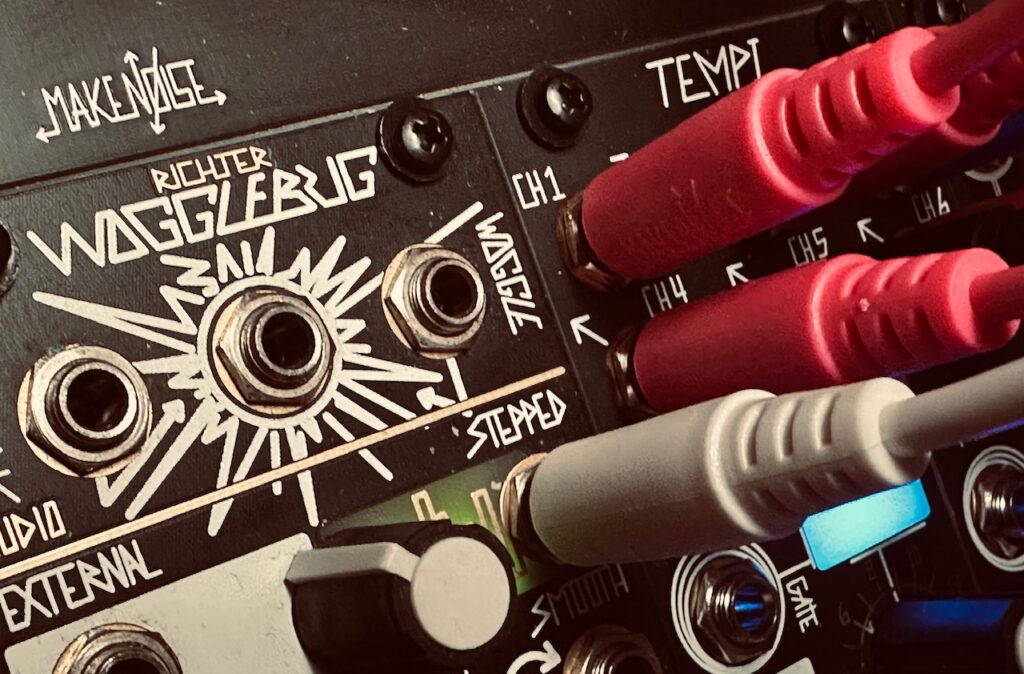
Modules Used:
René Mk2
Tempi
STO
QMMG
Spectraphon
ModDemix
Function
QPAS
Maths
X-Pan
Mimeophon
Improvised and recorded in one take in AUM via the Expert Sleepers ES-10 and Arturia AudioFuse.

